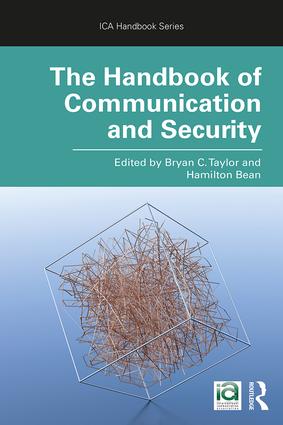 Image courtesy of Dr. Hamilton Bean
Image courtesy of Dr. Hamilton Bean
Understanding Security Through the Study of Communication
This article was written by Adjunct Fellow Hamilton Bean. Hamilton is the Associate Professor of Communication and Director of the International Studies Program at the University of Colorado Denver, where he conducts research at the intersection of communication, organization, and security, and teaches courses in strategic communication and organizational discourse.
I have been an American Security Project (ASP) Adjunct Fellow since 2013. Through its outreach, events, and reports, ASP has made a real impact on national and international security matters. But aside from important work in diplomacy and public affairs, the concept of “communication” hasn’t been treated as a core U.S. security issue. If security scholars and practitioners continue to overlook communication, or take it for granted, they will miss an important opportunity to understand and influence urgent issues facing the U.S. and international society. That’s the premise of a new volume that I have co-edited with Bryan C. Taylor for the International Communication Association (ICA) Handbook Series published by Routledge: The Handbook of Communication and Security.
What is Security Anyway?
For us, security refers to a condition in which the members of a group can experience relative confidence that the things they value are reasonably safe from threat, or that if a threat should manifest, it will be successfully engaged (if not defeated) by the group’s adaptive and defensive capabilities. This definition is consistent with ASP’s focus on Americans’ security in relation to climate, energy, technology, and economic competitiveness. But how do groups—whether transnational, national, or subnational—come to claim particular phenomena as “belongings” that are central to their history, identity, and culture? How do they come to believe that particular phenomena pose threats to the safety, viability, or exclusivity of their cherished belongings? How do they decide when, where, and how apparent threats warrant the use of particular defenses? The answer for us and our chapter contributors is communication. We see security and communication as interdependent (a phenomenon expressed by the symbol “communication ←→ security” throughout our volume).
Communication ←→ Security: From Ancient Greece to Xinjiang
Throughout history, communication has served as both the means and object of security. In ancient Greece, the philosopher Plato envisioned an elite cadre of “Guardians” who would serve as the protectors of his idealized city-state. By whatever means it is performed, this kind of protection is intimately tied to the maintenance of social and political order, and it inevitably relies on the harnessing of communication. To achieve security, leaders design and deploy communication both within (e.g., as socialization) and beyond (e.g., diplomacy) a group’s primary membership. Further, leaders’ surveillance and assessment of members’ conformity to authority often takes communication itself as its object. To continue the example, Plato expressed concern that, through hearing the oral performance of poetry, the Guardians might develop competing identifications that would undermine their loyalty to the city-state. In more contemporary examples, both liberal and illiberal states employ watchers to monitor online interactions among “vulnerable” groups in order to counter their “radicalization” and recruitment to extremism. What links ancient and contemporary examples, as well as democratic and authoritarian ones, is that some figure or group must assume responsibility for arguing to an authorizing audience that the apparent status, location, or intentionality of a threat is no longer tolerable and warrants a particular response. While this process takes many forms, speakers must typically establish for those audiences that the anticipated costs of a recommended response to lives, relationships, infrastructures, fortunes, and the natural environment are necessary (if not desirable) to achieve a desired security goal. The success of these arguments relies in part on speakers’ invocation of cultural norms, values, and beliefs that leads audiences to identify with particular depictions of a security “problem” and proposals for its “solution.”
What a Focus on Communication Gets Us
Security scholars and practitioners have typically taken the relationships among speakers, audiences, arguments, and outcomes for granted. But what if they didn’t? Our chapter authors explore this overarching question in applying the premises of communication ←→ security inter-dependency to the familiar spheres of war, (counter-)terrorism, militarism, surveillance, and defense. Focusing on communication creates an opportunity to better understand how various groups have used their argumentative resources to propose, sustain, and challenge the policies that guide their conduct. When officials are more reflective about the communication ←→ security relationship, they should be better able to evaluate—and perhaps transform—the security policies that shape our lives and well-being.
Read more about The Handbook of Communication and Security, including the sample chapter from which this blog post is drawn, here.





